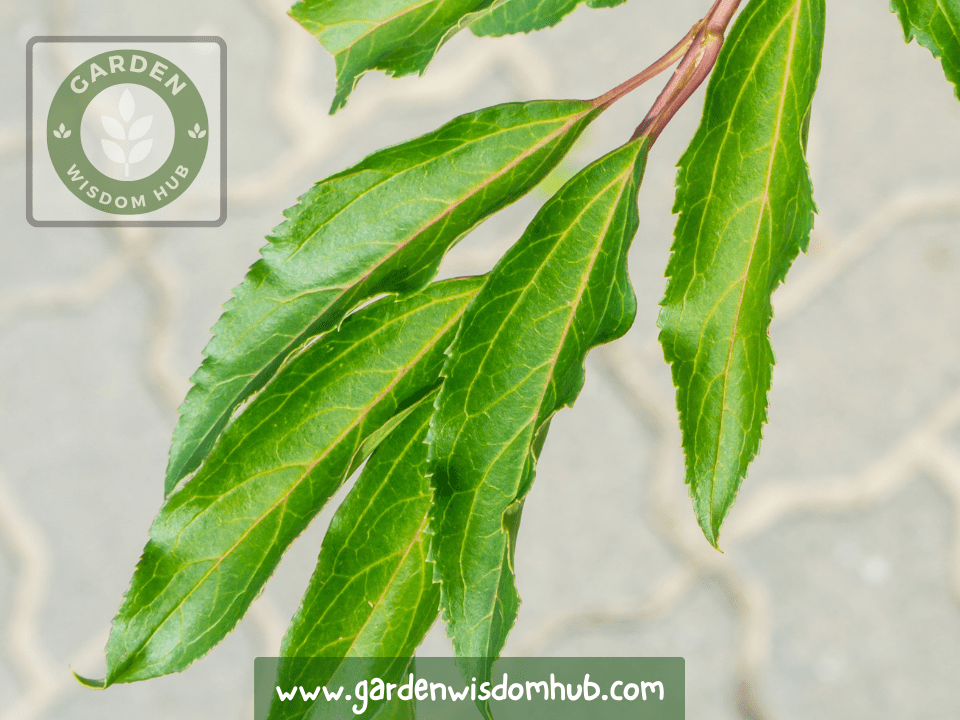Rubber trees (Ficus elastica) are unique houseplants. They never stop showing off their shiny leaves and don’t care about their high-care needs. However, rubber trees can have problems, and leaf curling can be especially problematic. If your rubber tree leaves are curling, you must find the cause and possible treatments.
Ultimately, we want your plant to grow and be happy!
Why Are My Rubber Tree Leaves Curling?
I guess they’re dancing or something! Seriously, I don’t get why they’re curled up. A mystery is driving me mad and making me scratch my head. These are the comments of people who don’t know what is happening to their rubber tree leaves. But no worries, these are the mentioned reasons for rubber trees being curled up.
Environmental stress:
No doubt, rubber tree leaves are drama queens! Despite their best efforts, they writhe in protest at even a minor temperature or draft shift. Let’s not even talk about how they react to rapid humidity changes! It looks like a soap show audition. Give your plant a consistent atmosphere to maximize its life.
The Watering Issue:
Flooded or parched plants may curl their leaves badly. Both approaches may cause this. Excess water can damage roots, turning leaves yellow and curled. However, insufficient water curls and crisps the leaves.
Lighting:
Too much or too little light can curl leaves. Like Goldilocks and the three bears, your plants need optimum illumination to thrive. Rubber trees thrive in well-lit areas, although they are not picky about the light. Watch out for sneaky sunshine! It can be naughty; therefore, the leaves close up as a protection.
Nutrient Insufficiency:
Plants that lack nutrients like nitrogen, twist and turn unusual colors. Balanced fertilizer may help your rubber tree. This gives those leaves nourishment to grow!
Pests:
Mealybugs and spider mites enjoy rubber trees. They’re awful. They’re curling the leaves and causing mayhem because they consider it their playground. It seems they are trying to hide their purpose of ruining your magnificent rubber tree. Sly varmin! Keep an eye on your plant and remove any irritating insects immediately.
How to Fix Curling Leaves on a Rubber Plant:
Are you struggling with rubber plant leaves that curl? Relax—I have the solution! Return those leaves to their appropriate placements to restore your plant’s majesty. Can we start organizing those leaves right away?
1- Plant Watering Tips:
The right amount of water for your rubber tree is crucial. Please wait until the top inch or two of dirt has dried before watering again. No need to drown plants! Use a well-draining potting mix and a container with drainage holes.
2- Light your rubber tree properly.
Place it where it gets lots of direct and indirect light. Avoid the sun, especially in hot weather.
3- Humidity:
Rubber trees need moderate to high humidity to thrive; hence, humidity must be maintained. Why not install a humidifier or water tray near the plant to add moisture?
4- Watch your rubber tree for unwanted guests:
Regular inspection is required. If you find any, apply a little insecticidal soap or neem oil.
5- Monitor the temperature:
Your rubber tree must be shielded from sudden temperature changes and drafts. Be vigilant about temperature. Maintaining a pleasant, warm temperature range optimizes growth.
Rubber Plant Leaves Curling Upward: Why Are My Rubber Tree Leaves Curling?
Your rubber plant seems like it’s doing yoga since its leaves curve upward. It seems to say, “Hey, I’ve had enough of this bright spotlight; give me some shade!” Thus, your plant may need a more relaxed environment where it can relax and spread out without feeling like it’s on stage. Why not rest your plant from the sun? Find a shaded spot for it to relax.
Rubber Plant Leaf Problems:
Leaf curling is one of many potential issues. Leaves turning yellow, dropping off, or sprouting spots are other issues. These are some potential issues. You shouldn’t worry because each issue has its own causes and solutions.
Rubber Plant Leaves Turning Brown on Edges:
Unfortunately, your rubber plant’s leaves are starting to crisp at the edges. Get out the watering can and let those leaves drink. They must be thirsty. Remember that rubber plants need water daily! Honestly, this problem could have several causes. This could be due to insufficient water, humidity, or fertilizer. My mistake! Now is the moment to change your care routine!
Rubber Plant Leaves Curling and Brown:
Rubber plant leaves are yellowing and curling! Your rubber plant appears to be struggling. The unlucky thing may be overwatered, underwatered, or have pests. It needs more love and attention! Let’s study every possibility and give them the attention they deserve.
Rubber Tree Leaves Falling Off:
Your rubber tree seems to be having a party! Your plant may be stressed by its surroundings, receiving too much or too little water, or being plagued by pests. Time to investigate and care for your rubber tree! Let’s investigate and make changes ASAP!
Why Are My Rubber Tree Leaves Curling? Curled Rubber Plant Leaves:
Environmental stress, irritating pests, food deficiencies, and unintentional watering can cause curled locks. Let’s study every possibility and give them the attention they deserve. Oh, curled rubber plant leaves! Do you agree that they can be drama queens? They may be saying, “Hey, I’ve got pests!” or “I’m feeling a bit nutrient deficient here!” or “This environment is stressing me out!” It’s like a mystery novel with so many alternatives! Let’s find the cause and then fix it.
Rubber Plant Curly Leaves: Solution:
To keep your rubber plant in great shape, you must understand its care needs and be able to manage any concerns with fun and charm. You’ll get lovely, shiny leaves if you give a rubber plant some attention and the right environment.
Interesting Rubber Plant Facts:
- Rubber plants (Ficus elastica) are unique houseplants. They stand out with their unusual qualities and intriguing past. These rubber plant facts will entertain you
- Rubber comes from rich tropical rainforests in India and Southeast Asia. They’re champion indoor gardeners since they adore warm, humid settings!
- Rubber plants can grow to 100 feet in their natural habitat! Indoors, these bad boys grow to 6-10 feet tall as houseplants. That depends on how well you care for them and how often you trim them.
- Rubber plants produce milky latex sap, thus their name. Pretty nice, huh? Although less popular than Hevea brasiliensis rubber, its sap was once harvested and used to make rubber.
- Rubber plants clean the air well. These plants remove formaldehyde and beautify indoor areas. Thus, you may relax knowing your air quality is safe.
- Rubber plants have several leaf colors and designs. Popular varieties include the dark green ‘Robusta,’ the variegated ‘Tineke‘ with cream and green leaves, and the burgundy-leaved ‘Burgundy.’
- Rubber plants are harmless, but their sap can irritate skin and poison pets and humans. Keep them out of reach to avoid accidents! Carefully handling the plant and keeping it away from curious toddlers and pets’ little hands is advised.
- Stem cuttings make rubber plant propagation easy. Grab a sturdy stem, remove the lower leaves, and put it in water or soil to stimulate the roots.
- Rubber plants can live for decades, making them an excellent long-term addition to your house.
- Rubber plants symbolize plenty, happiness, and riches in certain civilizations. A prestigious reputation, huh? They’re often given as luck-bringing gifts.
Watch this Video For More Guide: Top 10 Rubber Plant Issues and solutions
Some final thoughts about Why Are My Rubber Tree Leaves Curling?
Rubber tree leaves may curl for many reasons. This scenario, like a mystery thriller, involves environmental stress, irrigation issues, lighting issues, nutrient shortages, and pests. Who knew plants were so complicated? If you work hard and care for your rubber tree, it will recover quickly. To keep your rubber plant alive and healthy, you must take care of it. Keep pests away, hydrate it enough, and provide enough light. If you care for your rubber plant, it will thrive.
Growing plants professionally requires knowledge of their growth stage. Visit our posts for amusing guides about the following:
- Spider Plant Growth Stages
- Spider Plant varieties
- Tips to save a dying corn plant
- How to Save an Aloe plant
- How to start your indoor garden herb
- Varieties of Tall Succulents and Cacti
- Varieties of Fast Growing Indoor Plants
Frequently Asked Questions about Why Are My Rubber Tree Leaves Curling?
What Does an Overwatered Rubber Plant Look Like?
Too much love might cause a rubber plant to reveal its yellow, mushy leaves. Oversaturated soil can cause root rot. Your plants can swim, at least!
How Do You Fix Curled Leaves?
The cause of curled leaves must be identified before treating them. Prepare to use your green thumb. Watering, lighting, and humidity must be adjusted to keep plants happy and growing. If you feel sorry for those old leaves, prune them.
What Does an Underwatered Rubber Tree Look Like?
A rubber tree without enough water may develop potato chip-looking leaves. These leaves are dry and crispy and curl up like yoga recruits. If circumstances get worse, those leaves may jump ship and depart their neglectful owner. The planet may feel like a desert tortoise’s shell. 14. Many factors cause rubber plant leaves to curl. The plant looks like it’s having a bad hair day.
James Porter
Welcome to our haven of gardening and plant care, where outdoor and indoor planting enthusiasts come together! At Gardening Wisdom Hub, we aim to provide you with the most authentic information on anything related to gardening, plant care, seasonal planting etc.
The author of our website is James Porter, an experienced industry veteran. He has a deep interest in everything green. James’s enthusiasm for exploring plants’ features and learning new gardening methods began at a young age. Gradually, his passion increased with time, leading him to become a highly esteemed professional. His extensive knowledge makes him a priceless resource for inexperienced and seasoned gardeners.

